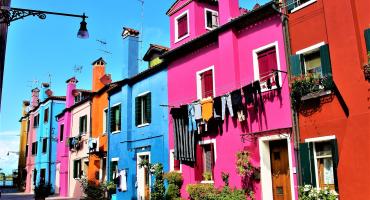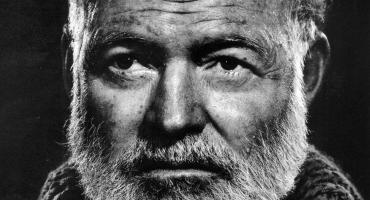This excursion is interesting not only by the landscape point of view but also by the ethnographic and cultural ones, since it will lead you to the historic, artistic and popular heart of the northern lagoon that reveals itself in multiple and contradictory aspects of its current reality. A suggestive experience, to live for one whole day, without hurrying but with your soul ready to discovery and astonishment by the given beauty of nature and traces of history that used to be a theatre for this part of the lagoon.
 From Venice Fondamente Nove we take the line to Mazzorbo, Burano, Torcello and get on for this pleasant journey by waterbus that will take us to the surreal atmosphere of an archipelago of little islands about 45 minutes away from the historic centre of Venice. The first one to welcome us in this "other Venice" immersed in the tranquillity of the lagoon is a solitary and discreet island of Mazzorbo. Whereas on the nearby Mazzorbetto, reachable only by boat, flora is luxuriant and wild, Mazzorbo is filled with simple coloured houses alternating with vegetable gardens and vine varieties. With a short walk from the ACTV stop landing stage, you will see a 14th century small church of Santa Caterina, one of the last remains of the ancient Maiurbium full of monasteries, churches and noble villas. The small and suggestive atrium with fishbone flooring precedes the small church alongside a nice dome bell tower where the most ancient bell of the lagoon is kept. The small church is surrounded by a small public garden, once old cemetery, where it's worthwhile a stop to admire the surrounding panorama.
From Venice Fondamente Nove we take the line to Mazzorbo, Burano, Torcello and get on for this pleasant journey by waterbus that will take us to the surreal atmosphere of an archipelago of little islands about 45 minutes away from the historic centre of Venice. The first one to welcome us in this "other Venice" immersed in the tranquillity of the lagoon is a solitary and discreet island of Mazzorbo. Whereas on the nearby Mazzorbetto, reachable only by boat, flora is luxuriant and wild, Mazzorbo is filled with simple coloured houses alternating with vegetable gardens and vine varieties. With a short walk from the ACTV stop landing stage, you will see a 14th century small church of Santa Caterina, one of the last remains of the ancient Maiurbium full of monasteries, churches and noble villas. The small and suggestive atrium with fishbone flooring precedes the small church alongside a nice dome bell tower where the most ancient bell of the lagoon is kept. The small church is surrounded by a small public garden, once old cemetery, where it's worthwhile a stop to admire the surrounding panorama.
 We continue our walk and cross the wooden bridge that will take us to Burano, a lively fishermen island as it can be noticed from all the boats docked along the shores and canals. Still nowadays, this islands seems to preserve its pace, traditions and colors, unconcerned by the excessive dynamism predominating some kilometers ahead. In fact, a true and real explosion of colours hits a visitor who has never been here. We advise you to walk slowly and lose yourselves in this walk through an island where slowness, identity and sense of community seem to be seized by time and space. Letting your look run along the coloured walls of houses where the hanged sheets flutter and on which the white panels of doors and windows stand out, you might still see an elderly lady sitting in front of the house entrance, busy with making lace, once a principal productive activity of the island and today one of its major tourist attractions. Going beyond small terraced lace shops that are trying to grant themselves tourists in search of an illusory handcrafted souvenir, you will reach main square of the island, named after renowned baroque musician “buranello", Baldassarre Galuppi. Here, to the ones that want to know more about ancient art of lace, we suggest a visit to Lace Museum, otherwise we suggest that you go back to the ACTV wharf and continue your itinerary towards another target, not reachable from most parts of tourist flows of the islands, which usually stop at the most crowded Murano and Burano.
We continue our walk and cross the wooden bridge that will take us to Burano, a lively fishermen island as it can be noticed from all the boats docked along the shores and canals. Still nowadays, this islands seems to preserve its pace, traditions and colors, unconcerned by the excessive dynamism predominating some kilometers ahead. In fact, a true and real explosion of colours hits a visitor who has never been here. We advise you to walk slowly and lose yourselves in this walk through an island where slowness, identity and sense of community seem to be seized by time and space. Letting your look run along the coloured walls of houses where the hanged sheets flutter and on which the white panels of doors and windows stand out, you might still see an elderly lady sitting in front of the house entrance, busy with making lace, once a principal productive activity of the island and today one of its major tourist attractions. Going beyond small terraced lace shops that are trying to grant themselves tourists in search of an illusory handcrafted souvenir, you will reach main square of the island, named after renowned baroque musician “buranello", Baldassarre Galuppi. Here, to the ones that want to know more about ancient art of lace, we suggest a visit to Lace Museum, otherwise we suggest that you go back to the ACTV wharf and continue your itinerary towards another target, not reachable from most parts of tourist flows of the islands, which usually stop at the most crowded Murano and Burano.

3°stage: (3h)So, we'll take a waterbus and after few minutes of sailing we'll get off at the nearby island of Torcello. Accosting this island, which once upon a time was the "capital" of the north lagoon and whose inhabitants can be counted today on fingers of one hand, will surprise you by its rustic and desolated aspect that it itself to a visitor. Together with few isolated houses, fences and meadows grown wild – indications of ancient gardens - and a vegetable garden here or there, these seem to be a unique trace of a human presence to the eyes of those who, in engrossed and slothful silence of this semi-deserted place, try to imagine themselves in a hard-working and busy maritime harbour city, gleaming with churches and palaces, in the middle of what used to be in the past the heart of economic and social life of the Venetian civilisation. When you get off the waterbus, follow the cost along a narrow canal on the left and shortly you'll see the solitary ponte del Diavolo (devil's bridge) that, according to legend, has appeared in the middle of this bridge in a shape of black cat every night on 24th December. The idea of finding yourselves in a ghost island will leave space for an impression to be in a surreal place when you arrive to a grassy churchyard surrounded by a heart of red bricks of the Basilica di Santa Maria Assunta, the most ancient one in the lagoon, side by side to its baptistery, the martyrium of Santa Fosca, the bell tower and the palaces of the Council and the Archive, today seats of Estuary Museum with its Archaeological and Medieval sections. In the middle of the square you'll see an ancient marble seat, used by Courts to administrate justice, but which, according to legend, would have been Throne of Attila, who was the king of Huns. Contrast between refined brilliance of the Byzantine architecture and slow and constant advancing of nature highlight even more the sensation to have arrived to an island-museum, an icon and a keeper together with their own ancient splendour. We advise to visit the splendid marble and Byzantine mosaics that decorate the floors and walls inside basilica and continue towards uncultivated part at the back where you can almost completely walk on stone paved footpaths before climbing up the bell tower, an ideal view point for perceiving the lagoon landscape in its intricate complexity. Coming down the bell tower, you could conclude visit to Torcello with a walk in full sandbank along the embankment which follows the coast of one of many small canals of this lagoon.
On the way back by waterbus that will bring you back to Venice, you'll come across two islets looking deserted, Madonna del Monte and San Giacomo in Paludo, where two thousand years ago used to be a convent with guestrooms giving shelter to sailors and today is a centre of environmental research.
Indicative length of journey: one day



